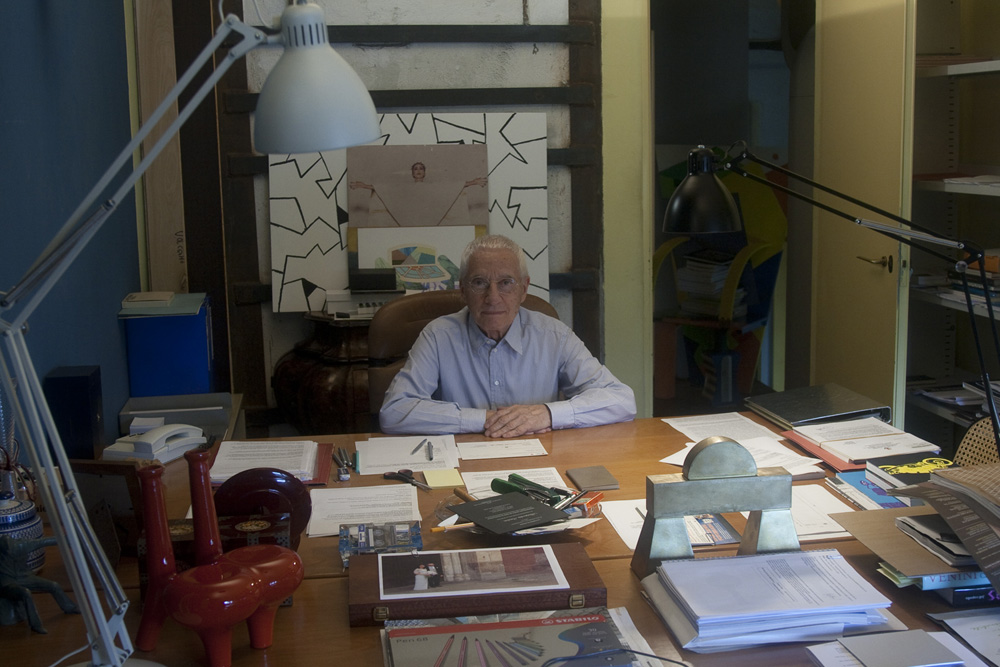Room 17
A large bourgeois villa near Milan. And in it the abstract presence of Giovanni Testori, the great artist I have always loved. How beautiful to make a gesture in his house, inside one of his rooms. Thoughts for me full of history and memory, words and drawings so much assimilated in the past. Of these games of souls is in fact my space in the Testori house, a tribute by performing a parallel exercise. My stylistic elements on his walls, a shot of understanding with his talking walls, where with colour I try to retrace the spirit of his gestures. And then in the belvedere in a semicircle outside the two windows a cold bronze armchair. Where I hope for a few days Testori will want to stay and meditate, that is, on Testori’s armchair.
Alessandro Mendini
Alessandro Mendini, with his work of interweaving designed painting and pictorial design, correctly places himself in the position of someone who cannot but represent contradiction as a value of artistic creation with other production processes that are subject to instructions before use. The complexity in this case consists precisely in the gentle project of transferring the cooling characteristic of design into the field of painting and the decorative warmth characteristic of design into this. The result is the stripping of a language purified of the hedonism of the material and the ornamental emphasis capable of ennobling the object’s lack of functionality. The operation is valid precisely from the search for a creative balance between the two polarities through the choice of a volubility capable of holding up two different yet converging creative processes. Evidently Mendini has overcome the superstitious pride of the artist as the architect of the world, of the one who has to produce constructive answers to the social demand for a possible order that can be transferred in scale from the perimeter of the work to the wider outside world. Mendini’s operative interweaving involves the assumption of a cross-eyed system of linguistic production always supported by a desire for abstraction of the genres used. Abstraction is achieved precisely through the application of the method of contradiction. Contradiction of linguistic specificity achieved through “designed painting” and “pictorial design”. In this way, we witness a de-structuring of painting and design achieved through the expansion of their possibilities. The extension leads to a loss of boundary, the abstraction of a perimeter of the work that finds its definition through the citation of absolutely contaminating procedures. The transversality formulated by Mendini’s new creative method also implies the assumption of architecture as a vast field of representation, where the architectural module is not a building structure but a scenic tool. In this way we are not faced with the avant-garde hope of a synthesis of the arts as a possible totalising antidote to the partiality of languages and the world.
Achille Bonito Oliva
Alessandro Mendini was born in Milan in 1931.







